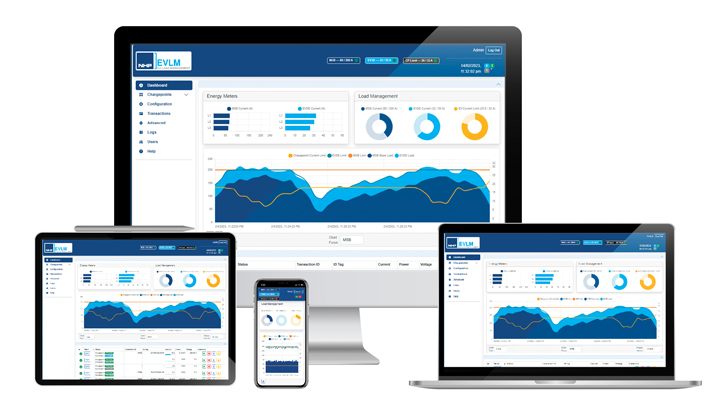As we move towards a greener and more sustainable future, the adoption of electric vehicles (EVs) is rapidly gaining momentum. To this end, the introduction of the National Construction Code (NCC) 2022 means that a dedicated electric vehicle distribution board (EV DB) is required for new buildings, a certain percentage of parking spaces in new developments and in significant renovations being equipped with EV charging points.
A dedicated EV distribution board is designed to handle the unique electrical demands of multiple EV chargers simultaneously. It ensures a seamless and optimised charging experience for EV users while preventing overloads and electrical hazards.
An essential in EV charging solutions
As the number of EVs on Australian roads increases, load management becomes a critical aspect of EV charging infrastructure. Load management refers to the strategic control of the electricity demand to prevent grid overloads and power supply issues. It ensures that EVs can be charged efficiently without putting undue stress on the electrical grid.
New buildings and renovations should employ load management strategies such as smart charging and demand response technologies to stagger the charging times of multiple EVs. By doing so, you can avoid peak demand spikes, maximise the utilisation of renewable energy sources and minimise the cost of charging.
NHP has just launched EnergySync, a cutting-edge load management system that can be easily fitted to your EV DB. There are several modes of EV charging, each offering unique benefits and use cases. EV charging mode 1 The EV is directly connected to a household socket. It’s the simplest charging method, with a maximum current of 16A and voltage up to 250V for singlephase systems or 480V for three-phase networks.
EV charging mode 2 Addresses safety concerns related to using standard household sockets. It uses a special charging cable equipped with an in-cable control and protection device. The maximum current is 32A, with a voltage up to 250V (single-phase) or 480 V (three-phase). EV charging mode 3 Employs several control and protection functions for public safety. It delivers AC current to the EV’s on-board charger and various power levels are possible, depending on the charging station.
EV charging mode 4 Delivers DC current directly to the EV battery, bypassing the on-board charger. It is typically used for fast charging stations. Remember, the choice of charging mode depends on factors like convenience, safety and charging speed. Whether you’re charging at home or using public charging stations, understanding these modes helps optimise your EV charging experience.
As the demand for EV charging infrastructure soars in Australia, the utilities sector is in a pivotal position to drive change. To help you take advantage of this transformative opportunity, NHP has partnered with Delta – one of the world’s largest EV charger manufacturers – to bring a range of high-quality EV charging products to the local market which are suitable for most applications in most industries, as well as councils and commercial and residential buildings.
NHP offers a range of Delta EV chargers from the basic 7kW AC option to the 350kW ultra-fast charging option. The company’s team of dedicated engineers have also developed in-house solutions to meet local changing EV infrastructure needs, including EV readiness site assessment services and NCC compliant EV DBs, which can incorporate NHP’s new cutting-edge load management system, EnergySync.
This sponsored editorial is brought to you by NHP. For further information, please visit nhp.com.au/EV














